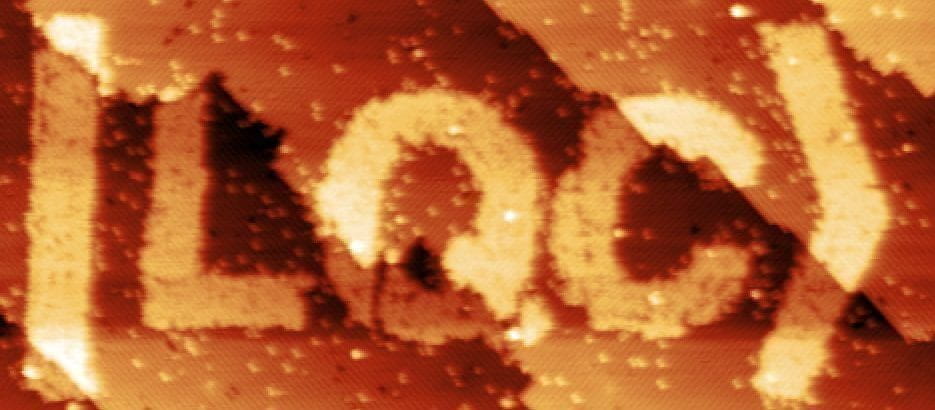LPS Announces First-Ever Qubit Collaboratory

The quantum world hosts a rich variety of physics that could enable functionality far beyond what traditional technologies can achieve. By probing and manipulating phenomena that occur at the single particle scale, the emerging field of quantum information science (QIS) aims to create new forms of computing, sensing, and communications that could revolutionize how we process and transmit data. The US recently launched the National Quantum Initiative (NQI) to foster collaboration across multiple government agencies in order to strengthen US leadership in QIS and support the next generation of quantum scientists and engineers.
Despite this potential for tremendous impact, the qubit, or the basic element of any quantum information system, still lags behind in the performance needed to reach these goals. To close this gap in performance, and in support of the NQI, the National Security Agency’s Laboratory for Physical Sciences (LPS) is launching the LPS Qubit Collaboratory (LQC) in partnership with the Army Research Office (ARO). First described by computer scientist Dr. William Wulf in 1989, a collaboratory is a “center without walls in which the nation’s researchers can perform their research without regard to physical location, interacting with colleagues, accessing instrumentation, sharing data and computational resources, [and] accessing information in digital libraries.” Inspired by this concept, the LQC aims to pursue disruptive research with people, new labs, and collaborations at LPS while creating new workforce programs and training opportunities, both at LPS and nationwide, and build on relationships with universities and organizations to bring together varied approaches towards advancing qubit and associated technologies.
“The LQC will combine collaborative research across the country and research experiences at LPS to understand the limits of quantum information technology,” said NSA Acting Research Director Dr. Mark Segal. LPS and ARO will build on years of experience to create an environment that is uniquely suited to tackle the most challenging problems in quantum information research. “ARO and LPS have worked together for 20 years to advance quantum computing research and build the quantum computing community. We take this bold step together to create a new kind of center,” said ARO Director Barton Halpern.
Figure above: The characters |LQC> (for LPS Qubit Collaboratory) patterned on the surface of a silicon wafer atom-by-atom in the LPS Atomistic Fabrication laboratory, courtesy Bob Butera, Laboratory for Physical Sciences.
Over the past two decades, researchers have scaled qubits from just a single device to systems with dozens of devices integrated into quantum computer testbeds. But the climb is far from over. As Dr. Charles Tahan, Chief Scientist of LPS and currently on detail to White House’s Office of Science and Technology Policy, points out, “The quantum computers of tomorrow won’t use today’s qubits. We need to continue to work on the hard, long-term problems.”
In addition to relying on its own expertise in qubit technology and materials science, LPS hopes to expand the number of people working on these problems by pursuing programs like qubit foundries that make these devices more accessible, as well as supporting spin-off technologies in areas like cryogenics.
The LQC will build on LPS’s longstanding relationships with the public and private sectors to support an emerging quantum workforce. According to Dr. Laurie Locascio, Vice President of Research at the University of Maryland-College Park, which has collaborated with LPS for more than 60 years, “Our unique partnership has enabled UMD professors and students as well as LPS researchers to advance the physics of information technology faster together. It has educated generations of scientists and engineers who have gone on to have significant impact in academia, industry, and government.” One key example of their successful collaboration is the Joint Quantum Institute, a center founded together with the National Institute of Standards and Technology, which has since become a hub for cutting-edge physics research.
More recently, LPS became a founding partner of MIT’s Center for Quantum Engineering, funding multiple “Doc Bedard” fellowships for graduate students in addition to curriculum development for quantum engineering. “The history between LPS and MIT goes to its beginning,” said Dr. Maria Zuber, Vice President for Research at MIT. “LPS’s first director and member of its technical staff in 1958 were both from MIT. We eagerly renew this relationship for the 21st century.”
Building on these models, ARO will announce a Broad Agency Announcement (BAA) that solicits proposals for partnerships with outside institutions, allowing visiting researchers to develop joint research proposals, use shared lab spaces, and interact with collaborators across academia, government, and industry.
“We plan to start small in the first year, test out the model of collaboration, and expand to quite a large center over the next five years, a truly national Quantum Information Science Research Center” said Dr. Robert Cunningham, Director of LPS. As the scale of research expands, the center also anticipates investing in the education of new quantum scientists by offering quantum computing summer programs, creating more graduate and postdoctoral fellowships, and enabling first-hand experiences with building and testing quantum systems in a government lab environment. “We want to show that government service as a scientist, engineer, or program manager can be just as, if not more, impactful for the Nation than any other quantum career path,” said Dr. T.R. Govindan, Program Manager at ARO.
Through this multi-pronged approach, the LQC is poised to bring together a new era of quantum discoveries founded on collaboration. By pulling from a wide range of expertise, Tahan believes they are well-positioned to finally bring qubits closer to their lofty goals. “We are the qubit people, and we are going to double down on that,” he says.
The NSA Laboratory for Physical Sciences exists to drive physical sciences research in future information technologies to prevent technological surprise. Founded in 1957 in partnership with the University of Maryland, LPS has evolved a model of basic and applied research that focuses on government engagement with academia and industry. Our fabrication and measurement laboratories allow researchers at LPS, along with our partners, to make, measure, and understand state-of-the-art systems.
